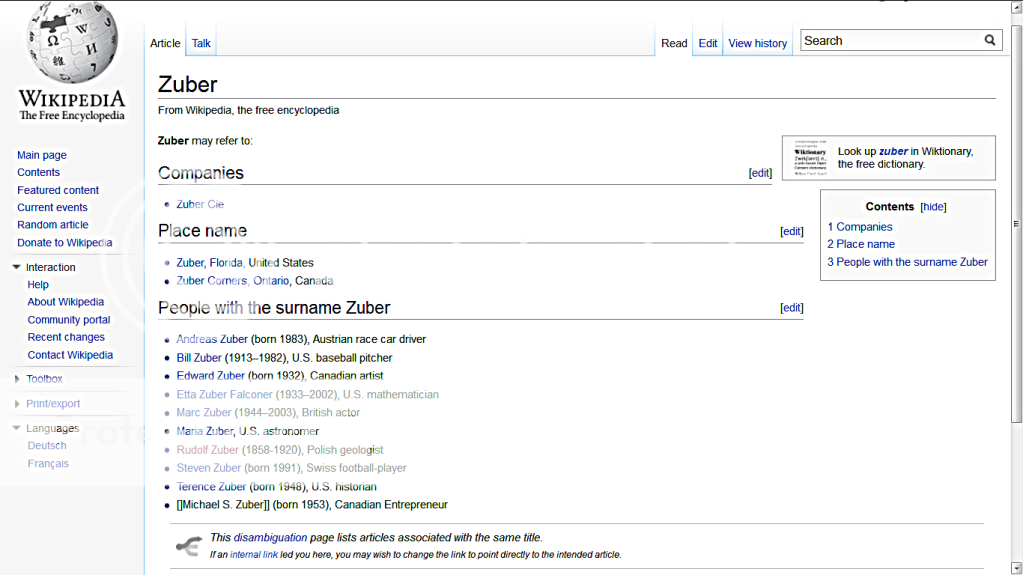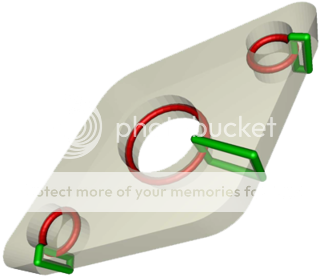The Handl's, the seven keys to the house of gables, the puzzle pieces, whatever you call it...
[quote author=http://www.sott.net/articles/show/209285-Crop-Circle-Season-Arrives-with-a-Mathematical-Message]
Another interesting element is the nature of the soil on which the circles appear. Pringle says that 93.8 per cent of crop circles are made on chalk, "a worldwide phenomenon" recorded in 54 different countries. She says the significance may be connected to underground springs called aquifers commonly found in chalk. One theory is that the "huge electrical force" of such springs works in harmony with the electromagnetic force of Earth's tectonic plates to create the patterns.
Blake also remarks on the significance of the chalk, which she says the ancients often built their monuments on - an observation which the existence of Neolithic sites like Stonehenge and Avebury attest. She says the ancients also built their temples on "energy lines" and has observed that "crop circles always appear on or near these lines." Blake was impressed with the Barbary Castle circle and its derivations because the shape itself was "like a Labyrinth," which "gives it a spiritual as well as a mathematical tradition."[/quote]
Stonehenge is built on chalk.
In Terry Pratchett's
The Wee Free Men, the main character Tiffany is asked, how come she's a witch when she's born on chalk downs, and witches can't tolerate soft land like chalk. Tiffany responds, the bones of these hills are flint, and flint is the hardest of all.
[quote author=Bringers of the Dawn]
The original designers of the human body were benevolent beings. These original creator gods were very generous in endowing you biogenetically with a tremendous vitality of spirit and a tremendous zest of capability. Much of this information is stored within your body in the light-encoded filaments that are scattered and are coming back into alignment.
Your bones and skeletal form correspond with that information. When your skeletal form is in alignment, the energy from sacred power sites is released, the cosmic rays are pulled into your body, and the light-encoded filaments inside your cells begin to reorder themselves, you will find that you are in the change. The change will be mirrored to you everywhere you look.[/quote]
[quote author=Bringers of the Dawn]
Many of the structures built on this planet, particularly ancient sacred sites, have information stored within stone. In the same way, you have information stored within the bones of your skeletal form. When you allow sound to move through you, it unlocks a doorway and allows information to flood into your body. It also penetrates the ground, affecting the vibrations of Earth and allowing a rearrangement of a molecular alignment of information to take place.[/quote]
Next we must somehow relate soil/water/humidity to EM.
[quote author=Judith Moore & Barbara Lamb / Crop Circles Revealed: Language of the Light Symbols]
The Influence of Water and Weather on Crop Circles
Some scientists and geologists have determined that under many crop circles are geological aquifers composed of very porous limestone, sandstone and chalk. This substratum absorbs water from the abundant English rain and easily yields water. They also notice that many crop circles are places over underground streams and other water sources, or where the water table is high.
... told me that their dowsing always shows that crop circles are places over underground water.
... have found a relationship between formations and underground watersheds through analyzing infrared photographs
... found that the chalk and greensand under many crop circles hold water.
This underground water is necessary for the steam effect that seems to be involved in the making of crop circles. Some crop circle scientists theorize that when heat of 500 degrees Fahrenheit or higher is applied to the plants as abundant moisture is being drawn up from under the soil, the plants become pliable enough to be gently bent over at ground level without any cracking, breaking or killing, and then to be swirled or shaped to form a variety of patterns.[/quote]
Now for the 42nd parallel north, or the 43rd parallel north, give or take. There we have places like: Horseheads NY, the Pyrenees, Vladivostok, Flint MI, Rochester NY (Terry), Keuka Lake (one of the Finger Lakes in NY - Terry), Serpent Mound of Ohio, Rock Lake pyramids of Wisconsin.
The rest in descending order:
| Novosibirsk | 55° 01′ N |
| Magnitogorsk | 53° 23′ N |
| Irkutsk | 52° 18′ 44″ N |
| Uffington White Horse | 51° 34′ 40.48″ N |
| Stonehenge | 51° 10′ 43.84″ N |
| Oak Island | 44° 31′ N |
On nitrogen fixation, Jones, we have Terry being the Third "neutralizing" element between Frank and Laura. The emulsifier, the nitrogen, from Neormm. And what of perpendicular realities? The C's drew a wheel with two rims and seven spokes, seven densities, seven main colors of the visible EM spectrum - "vibratory frequency light"?
[quote author=http://cassiopaea.org/2010/05/08/the-wave-chapter-5-perpendicular-realities-tesseracts-and-other-odd-phenomena%E2%80%A6/]
Q: (J) Point taken! (L) There is no point. [Laughter.] Well, if you expand the circle outward and continue expanding it in all directions, it pulls the seven spokes with it, which encompasses more and more space in a cross section, and then turns that circle, you have a sphere.
A: Precisely. But Laura says that means we are living in a big globe. And, maybe we are.[/quote]
The C's taught us that a line is really a circle. So the seven spokes will turn back on themselves, in a circle. And they bring the "wheel rim" along. To help visualize this: think of the Arctic Circle as the rim, and the seven spokes are seven longitudes radiating from it. When the circle expands, we get all the latitudes of Earth. The wheel rim is what "joins" the perpendicular realities (spokes) together. Thus each latitude of Earth has multiple perpendicular realities on it! I guess we only need seven. The C's say that seven is always the optimal number. Seven "dancers". Seven key longitudes. Seven "prime meridians"?
Also, I note that we are indeed living in a "big globe" - which takes the form of Earth. As above so below. (And I guess Earth's molten core would be the Creator...)
Throwing this in for good measure:
[quote author=http://cassiopaea.org/2010/05/08/the-wave-chapter-5-perpendicular-realities-tesseracts-and-other-odd-phenomena%E2%80%A6/]
A: And now, when you merge densities, or traverse densities, what you have is the merging of physical reality and ethereal reality, which involves thought form versus physicality. When you can merge those perfectly, what you realize then, is that the reason there is no beginning and no end is merely because there is no need for you to contemplate a beginning or an end after you have completed your development. When you are at union with the One at Seventh density, that is when you have accomplished this and then there is no longer any need for difference between physical and ethereal forms.[/quote]
[quote author=http://en.wikipedia.org/wiki/Aragonite]
Aragonite is a carbonate mineral, one of the two common, naturally occurring, crystal forms of calcium carbonate, CaCO3 (the other form being the mineral calcite). It is formed by biological and physical processes, including precipitation from marine and freshwater environments.
Aragonite's crystal lattice differs from that of calcite, resulting in a different crystal shape, an orthorhombic system with acicular crystals. Repeated twinning results in pseudo-hexagonal forms. Aragonite may be columnar or fibrous, occasionally in branching stalactitic forms called flos-ferri ("flowers of iron") from their association with the ores at the Carinthian iron mines.[/quote]
Carinthia - today it is in Austria. But it used to be a much bigger region, the Duchy of Carinthia, Hezogtum Carantania, which included much of today's Slovenia. Think Carniola when you hear Slovenia. And who was born in Carniola? Jacobus Handl!
[quote author=http://www.tacitus.nu/historical-atlas/regents/centraleurope/carinthia.htm]
Carinthia, Styria and Carniola
The region of central Austria and Slovenia became populated by Slavs at the end of the sixth century. They then created the principality of Karantania, which is known from the seventh century and is regarded by some as a predecessor to the modern republic of Slovenia. Karantania managed to maintain its independence from both the Avars to the east and the Bavarians to the west until the middle of the eight century when Avar pressure forced Karantania to seek Bavarian protection. Together with Bavaria became Karantania a part of the Frankish kingdom 788 and its last Slavic ruler was deposed 828 where after it was ruled by Frankish counts. The region was then known by its German name "Kärnten" and its was restored several times as a separate duchy during the ninth and tenth century. From 976 was it permanently a separate duchy. A large immigration of German settlers led to the assimilation of the original Slavic population in Carinthia, which 1335 became a part of the Habsburg dynasty's lands and thereafter was linked with Styria and Carniola during the repeated divisions of the Habsburg lands. From 1619 have Carinthia always been united with Austria and it is today an Austrian part state, although it is considerably smaller than the historic Karantania.[/quote]
Neormm - could it refer to Roman numerals? NEO in medieval Roman numerals is the value 171 (correct me if I'm wrong). We have a 7 sandwiched between 11. RMM would be the value 1920. MM by itself would be 2000. Just a thought.








